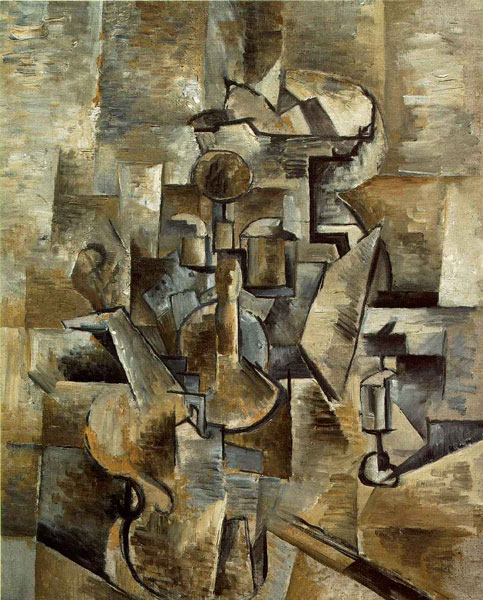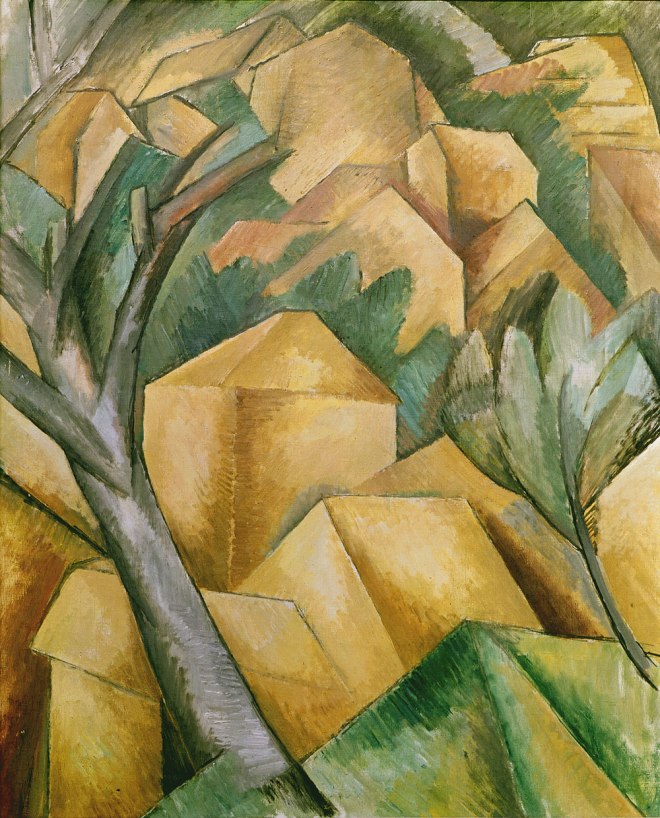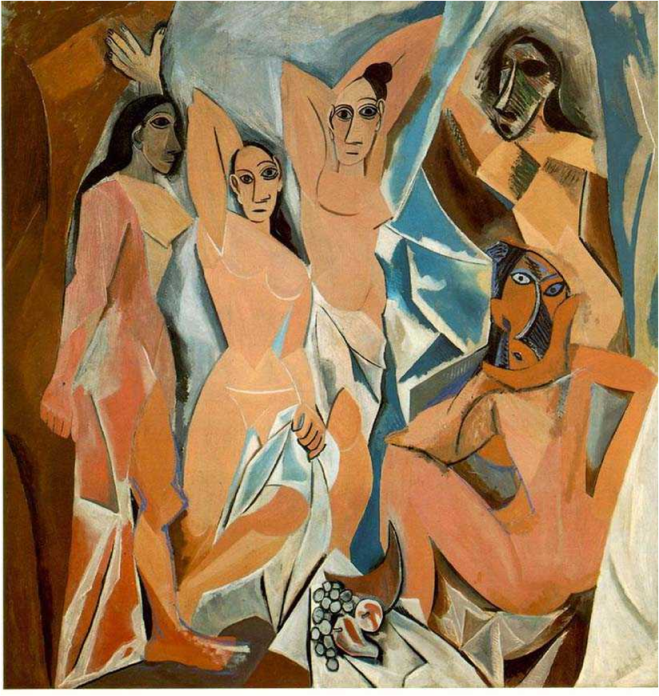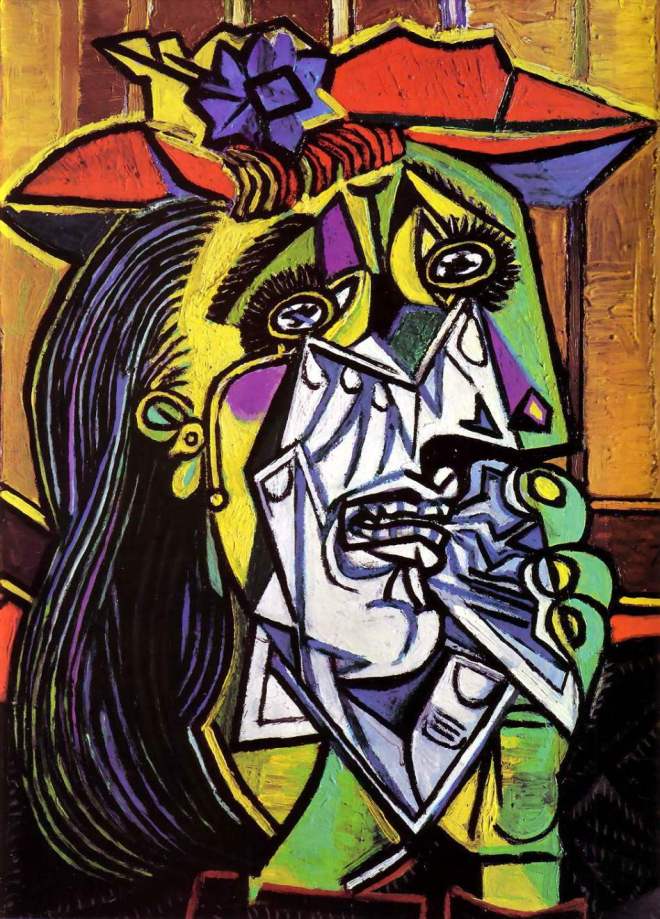Cubism is an early 20th-century artistic movement that is a revolution in painting and sculpture. It also influences architecture, literature, and music.
Cubism represent objects analysed, decomposed and reassembled into an abstract composition, as if the artist multiplied different points of view.

Developed from 1907 on the initiative of the painters Pablo Picasso and Georges Braque, cubism knows its apogee during the period known as analytical cubism (1910-1912) with works by artists such as Juan Gris, Jean Metzinger, Albert Gleizes Robert Delaunay, Henri Le Fauconnier and Fernand Leger.
In 1906, Georges Braque methodically studied the outline lines of Cézanne’s paintings and gradually led to compositions that used slight interruptions in the lines, such as in Nature morte au pichet and Maisons à l’Estaque.

From 1907, Braque and Picasso experiments a lot of things. They gradually realize paintings that tend towards abstraction. They are characterized by a research on geometry and represented forms: all objects are divided and reduced into simple geometric shapes, often squares.
The traditional perspective is often reversed, with broken lines.
Picasso decomposes the image into multiple facets (or cubes, hence the name of cubism) and destroys the forms of reality, that leads into strange figures sometimes.

From 1910 to 1912, Braque and Picasso are closer than ever. The two painters apply their discoveries at the same time and not only to the landscapes, but also to the human figure.
They abandon the unique point of view of the motif to introduce multiple points of view from different angles in the same work : they get rid of perspective.

« Cubism is an absolutely original pictorial language, a totally new way of approaching the world, and a conceptualized aesthetic theory. We understand that it was able to give a new direction to all modern painting », John Golding.


I like the first 2 paintings that you put in your article. I like this geometric and regular sides. Indeed, the last 2 tables are less symmetrical and more complex to interpret from my point of view.
J’aimeJ’aime
I saw the Guernica fresco in Spain some years ago! It was really impressive
J’aimeJ’aime